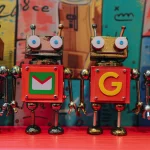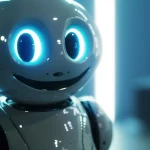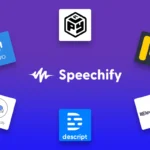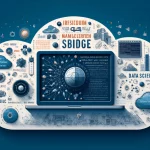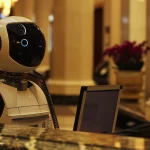AI Text to Speech Voice Cloning AI voice cloning technology demystified & explained.

Generate AI Voices, Indistinguishable from Humans
Table of Contents
You’ve seen them: TikTok videos with AI voiceovers. You can probably hear them in your head now, saying all sorts of things. Get to know everything about AI Text to Speech Voice Cloning. What is it, how it works, and how you too, can use it!
AI voices are everywhere, especially when text-to-speech (TTS) technology makes ultra-realistic AI voices so accessible. Just open your preferred voice cloning tool, write a few lines of text, select your AI voice — or design one with your preferred gender, language, style, and tone — and generate an audio file you can add to videos and presentations as a voiceover.
Incredibly, you can even clone your own voice.
Voice cloning is the new frontier of artificial intelligence text-to-speech technology. In traditional AI voice synthesis, you choose a voice from preset options. (Isn’t it lovely how much AI technology has advanced in the last decade that an oxymoronic phrase like “traditional AI” seems to just roll off the tongue now?)
You may customize an existing AI voice style, tone, and other characteristics. You can make them male or female, heavily accented or neutral, and friendly, conversational, exuberant, surprised, or matter-of-fact. However, at the end of the day, your output is a synthetic voice that reflects hundreds of hours of anonymous voice recording data.
AI voice cloning is a significant step up for AI text-to-speech. You won’t need to play around with preconfigured AI voices to create an output that approximates your voice because AI voice cloning TTS software will do it for you.
An Overview of AI Text to Speech Voice Cloning
n today’s era, the best AI voice generators can create voice outputs that sound like you. How do they accomplish this? Find out more below.
What Is AI Voice Cloning?
AI voice cloning pertains to a machine learning (ML) model replicating a “donor voice” based on audio training data.
If you’re cloning your voice, you’ll supply the AI model with samples of your speaking voice. It will analyze these samples, extract the unique characteristics of your voice and synthesize an artificial voice with your speech patterns. The result is an AI-generated voice that sounds exactly like yours.
How Does Voice Cloning Work?
Voice cloning software can use one of the following methods to clone voices: speaker adaptation and speaker encoder.

Speaker Adaptation Voice Cloning
Speaker adaptation or speech adaptation is the core technology driving text-to-speech voice cloning. It needs the following:
- A base model trained on the audio data of multiple speakers
- Target audio data or audio clips from the target speaker, i.e., the person’s voice; the AI voice model will clone
The base model is adjusted (or finetuned) to the target speaker’s provided audio set. The resulting adapted model reflects the target audio data.
Speech Encoder Voice Cloning
Real-time voice cloning apps are powered by speech encoder voice cloning technology. You start by feeding your speech encoding software samples of the voice you wish to clone. The program extracts a feature vector from the speech samples. It uses this to drive a TTS model to generate an AI voice that reflects the characteristics of the target voice.
High-Fidelity vs. Zero-Shot Voice Cloning
If you’re interested in AI voice cloning, you’ve likely read about high-fidelity and zero-shot voice cloning somewhere. What are they?
High-Fidelity Cloning
High-fidelity cloning uses speech adaptation technology to generate voice clones. The best voice cloning software, Play.ht can produce high-fidelity clones by analyzing two to three hours’ worth of voice samples.
The more audio you provide, the better the outcome. This way of cloning your voice with AI takes a few hours of processing, but the results are impressive.
Zero-Shot Cloning
Zero-shot cloning, also known as instant cloning is real-time voice cloning that uses the speech encoder method. At Play.ht, you can create a zero-shot clone with only 30 seconds of audio.
Again, the longer your audio sample, the better.

Why Embrace Voice Cloning
Voice cloning software amplifies the benefits of AI speech synthesis technology.
Cost Effectiveness
Voice cloning is a cost-effective alternative to hiring a voice actor to record your voiceovers. It will let you produce high-quality results at a much lower cost, especially if you follow our voice cloning tips.
Time Savings
Voice cloning saves you time. Track your time and see that it takes less time to create voiceovers using TTS applications than actually recording the voiceovers. Creating an AI voice clone takes just minutes to a few hours. Creating audio files using a cloned voice takes even less time.
If you spot any errors in your script, you won’t need to re-record either. You just have to correct the text, run it through your TTS software and get a fresh recording of the revised script in minutes.
Creativity
What can’t you do with voice cloning?
When replicating or modifying voices at will, you can conceptualize the most distinct game character and give it a unique voice to match.
You can produce a David Attenborough documentary or a George Clooney animated movie. How about cloning your voice, tweaking it with region-specific language, and creating localized content?
Voice Cloning Use Cases
Stephen Hawking lost his voice in 1985 when he was around 43. Thanks to Speech Plus CallText 5010, a machine that synthesized speech from text, Stephen did not lose his ability to communicate.
That said, wouldn’t it have been incredible if Stephen’s speech synthesizer used his voice, too? If AI voice cloning existed back then, it probably would have.
Sidenote: Stephen loved his speech synthesizer’s voice, dubbed “Perfect Paul,” created (and voiced) by Massachusetts Institute of Technology researcher Dennis Klatt of MITalk. Stephen identified with Perfect Paul so much that his team had to replicate it when they upgraded Stephen’s speech synthesizer.
Indeed, voice cloning AI can give voices back to those who have lost their ability to speak. It would have enabled Stephen to use his voice instead of Dennis Klattt’s. Even Dennis himself could have used it to regain his voice when cancer robbed him of it.
Aside from empowering voiceless people to speak with their voices, AI voice cloning software has many other potential applications, including the following:
Professional Applications

Are you an educational content creator on Udemy? You can use AI voice cloning to replicate your voice and create hundreds of hours of voiceovers for your materials.
You don’t need to record your voice separately for lectures. Just use your voice clone and generate voiceovers in minutes.
Want to add a personal touch to your customer touchpoints? Clone your CEO’s voice and use that on your customer service hotlines’ interactive voice response (IVR) system. Enterprises with well-known CEOs may find a good use case for this.
Personal Applications

Voice cloning has many fun, personal applications. You can use it to practice giving speeches and telling jokes. You can use it to record your phone’s voice message — yes, you can record your voice message on your phone directly, but where’s the fun in that? 🤪
Love to read but can’t find the time? Get an online copy of that book you’ve been meaning to read, plug the text into your text-to-speech voice cloning software, and enjoy an audiobook narrated by your voice clone in minutes.
Going on a business trip? Leave your children with pre-recorded bedtime stories. Using a voice clone will make the recording more personal without you needing to actually read the stories out loud.
Creative Applications

The voice clones of celebrities can take the speaking parts in animated movies. Car manufacturers can continue using A-list Hollywood actors’ voices for their ads (e.g., Jeffrey Bridges, Paul Rudd, Jason Bateman for Hyundai).
By using AI voice clones, producers and advertisers will need less of their actors’ or celebrity endorsers’ time, spend less on talent fees, and create masterpieces faster.
AI voice cloning also pushes the realm of what is creatively possible. Maybe you’re an indie video game producer and want to voice your game characters, but you don’t have a massive budget. So you use AI to clone a celebrity’s voice as a placeholder to get game development funding.
Future Trends of Voice Cloning
Market Reports World says the global voice cloning market is experiencing substantial growth. It was worth $461.6 million in 2022. At an annual growth rate of 24.6%, it’s expected to expand and reach $1,723.9 million by 2028.
The future is bright for voice cloning technology, especially with AI-powered text-to-speech technology enabling and driving it.
As AI voice modeling technology evolves, newer methods develop, and voice cloning software improves, AI voice cloning outcomes can only get better. Consequently, it will have many more applications and gain more users.
The Voice of the Future: It’s Personal, and It’s Yours
AI voice cloning is a revolution that unlocks more of AI-powered TTS technology’s benefits.
Like generic and ultra-realistic AI voices, AI voice clones have professional, personal, and creative applications.
They can enhance your creativity and save you money. Most of all, they can help people who have lost





 Conversational
Conversational
 clone your voice
clone your voice



